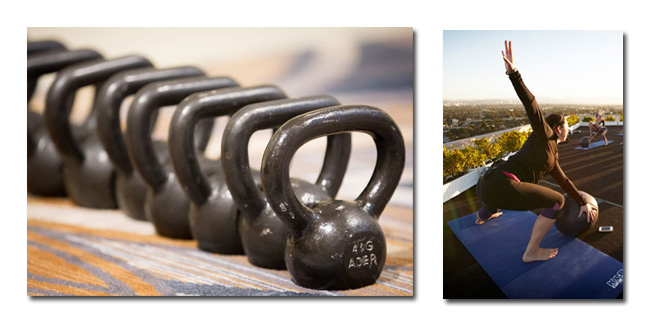
Integrated Circuit Intervals for Heart Health, Fat Reduction, and Fun
Posted by Spinning® on Apr 18th 2018
By Scott Lucett, MSDirector of Education – Mad Dogg Athletics
For many, it is generally assumed that to reduce body fat, you should perform aerobic exercise at a low-to-moderate intensity for long periods of time. This theory is commonly known as the "fat burning zone", which advocates exercising for longer periods of time at a low intensity. The only problem is that, although this approach does burn a higher percentage of calories expended from fat, you are still expending a relatively low number of calories. Unlike training slow and steady in the "fat burning zone," the higher the intensity at which one trains, the more fat and calories they will expend (Thompson, et al., 1998).One of the main objectives of the human body is to expend as little energy as possible. To do so, it has to adapt to the demands placed upon it (often referred to as the S.A.I.D. Principle, or Specific Adaptations to Imposed Demands). As instructors and riders, we must understand this principle and be able to use it to produce desirable results and to maximize the amount of calories expended in a training session. This is made easier by maximizing the oxygen consumed for the duration of (as well as the recovery from) the training session. This recovery oxygen consumption is known as excess post-exercise oxygen consumption, or EPOC.EPOC is simply the state in which the body's metabolism is elevated after exercise. This means that the body is burning more calories after exercise than before the exercise was initiated. This is analogous to how a car engine stays warm for a period of time after it has been driven. After exercise, the body needs more oxygen to replenish energy, lower the temperature of tissue, and return the body to a resting state. While EPOC is occurring, calories are still being burned.
Circuit Interval Training
One way to enhance EPOC while improving heart health is through the use of interval circuit training (Paoli, et al., 2012). Circuit interval training is a combination of high-intensity cardio and resistance training, and it's designed to be easy to follow while targeting fat loss, muscle building, and heart-lung fitness at the same time. An exercise circuit is one completion of all prescribed exercises in the program; the idea being that when one circuit is complete, you begin again with the first exercise to complete another circuit. Intervals are the specific exercises performed during the circuit, and the time between intervals in circuit training is short, often with rapid movement to the next exercise.An easy way to start your program is to perform 30-second work intervals followed by 30 seconds of rest. A circuit is made up of a series of intervals and is completed when you perform the series of work and rest intervals. The goal is to do a challenging 30-second interval, or a short burst of exercise, followed by a 30 second recovery.
Tracking Progress
Tracking your progress by monitoring your heart rate, repetitions, and heart rate recovery is extremely important. Unfortunately, many programs overlook this important component. We should keep a record of how many repetitions we perform and the workload used during each interval (speed, weights, incline, watts, etc.), which enables us to make the necessary adjustments as they progress. The goal should to increase the repetitions and workload every workout, so that we can enhance our EPOC. If you see either a drop in repetitions or workload over time, this may be a sign of overtraining, which can lead to injury, plateaus, or decreased motivation.
Sample Integrated Circuit Intervals
Interval circuits can be performed in a variety of ways. Exercises can be done using one mode of exercise (for example, in the Spinning® program, you can use different cadences and resistances as workloads) or by integrating a variety of exercises within the circuit. A key benefit to using different exercise modalities is variety. Including an array of exercises offers a multitude of stimuli that the body must adapt to, decreasing the risk of plateauing both physically and mentally. Below provides a series of sample integrated circuit interval for a beginning level individual to one who is more advanced.
Beginner Integrated Circuit Interval
You should incorporate a 5-minute warm-up prior to starting the circuit. Repeat the circuit 3 times to complete a full body workout in 30 minutes.| Work Intervals | Recovery |
| 30 seconds - Push-up | 30 seconds |
| 30 seconds - Side Lunges with Ugi® Ball | 30 seconds |
| 30 seconds - Kettlebell Swings | 30 seconds |
| 30 seconds - CrossCore® Row | 30 seconds |
| 30 seconds - Plank | 30 seconds |
| 30 seconds - Chest Press | 30 seconds |
| 30 seconds - Shoulder Bridge | 30 seconds |
| 30 seconds - Burpee with Ugi® Ball | 30 seconds |
| 30 seconds - CrossCore® Squats | 30 seconds |
| 30 seconds - Ab Crunch | 30 seconds |
Intermediate Integrated Circuit Interval
This version of the circuit would be performed in a similar manner to the beginner version; however, there is less rest time between exercises. You should now rest after every second exercise performed.| Work Intervals | Recovery |
| 30 seconds - Push-up | None |
| 30 seconds - Side Lunges with Ugi® Ball | 30 seconds |
| 30 seconds - Kettlebell Swings | None |
| 30 seconds - CrossCore® Row | 30 seconds |
| 30 seconds - Plank | None |
| 30 seconds - Chest Press | 30 seconds |
| 30 seconds - Shoulder Bridge | None |
| 30 seconds - Burpee with Ugi® Ball | 30 seconds |
| 30 seconds - CrossCore® Squats | None |
| 30 seconds - Ab Crunch | 30 seconds |

Advanced Integrated Circuit Interval
This version of the circuit would be performed similar to the basic and intermediate versions; however, there is even less rest time between exercises. You should now rest after every third exercise.| Work Intervals | Recovery |
| 30 seconds - Push-up | None |
| 30 seconds - Side Lunges with Ugi® Ball | None |
| 30 seconds - Kettlebell Swings | 30 second rest |
| 30 seconds - CrossCore® Row | None |
| 30 seconds - Plank | None |
| 30 seconds - Chest Press | 30 second rest |
| 30 seconds - Shoulder Bridge | None |
| 30 seconds - Burpee with Ugi® Ball | None |
| 30 seconds - CrossCore® Squats | 30 second rest |
| 30 seconds - Ab Crunch | None |

Traditional Cardiorespiratory Exercise Integration
Traditional cardiorespiratory exercise can also be integrated into circuit intervals, where we would perform low-to-moderate intensity cardiorespiratory exercise during the recovery (more commonly known as active recovery). For variety, different modes of cardio (indoor cycling, running, elliptical workouts, etc.) can be used after each work interval exercise. However, one key element to consider with this approach is the ability to easily access each piece of cardio equipment after the work interval exercise to ensure a seamless transition from exercise to exercise. A way to remedy this potential issue is to choose one mode cardio exercise with the other required pieces of equipment close by in order to ensure an easy transition to the next exercise. Below is an example of this kind of integrated circuit interval.| Work Intervals | Recovery |
| 30 seconds - Push-up | 30 seconds – Cycling |
| 30 seconds - Side Lunges with Ugi® Ball | 30 seconds – Cycling |
| 30 seconds - Kettlebell Swings | 30 seconds – Cycling |
| 30 seconds - CrossCore® Row | 30 seconds – Cycling |
| 30 seconds - Plank | 30 seconds – Cycling |
| 30 seconds - Chest Press | 30 seconds – Cycling |
| 30 seconds - Shoulder Bridge | 30 seconds – Cycling |
| 30 seconds - Burpee with Ugi® Ball | 30 seconds – Cycling |
| 30 seconds - CrossCore® Squats | 30 seconds – Cycling |
| 30 seconds - Ab Crunch | 30 seconds – Cycling |
Summary
Circuit interval training is an excellent way to add some fun variety to a workout, while improving fat loss and overall cardiorespiratory fitness. These circuits can be easily performed in any environment using a multitude of training modalities. They can also be done in both one-on-one and small group settings. As with any exercise, form and technique becomes critical to ensure the safety of the program being delivered. Choose exercises that are consistent with your students' fitness levels and provide the appropriate rest intervals as needed.
References
Paoli, A., Moro, T., Marcolin, G., Neri, M., Palma, A., & Grimaldi, K. (2012).High-Intensity Interval Resistance Training (HIRT) influences resting energy expenditure and respiratory ratio in non-dieting individuals. Journal of Translational Medicine, 10, 237.Thompson, D.L., Townsend, K.M., Boughey, R., Patterson, K., & Bassett D.R. Jr. (1998).Substrate use during and following moderate- and low-intensity exercise: implications for weight control. European Journal of Applied Physiology and Occupational Physiology, 78(1), 43-49.
